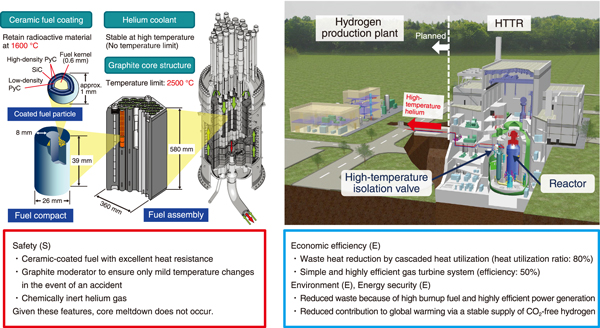
Fig.1 Features of the HTGR and plan of the HTTR heat application test
The High Temperature Gas-cooled Reactor (HTGR) is a highly safe reactor that can meet the requirements of various industrial applications, such as hydrogen production using high-temperature heat and high-efficiency power generation using helium gas turbines (Fig.1 left). With the High Temperature Engineering Test Reactor (HTTR), which is an HTGR test reactor developed in Japan, high-temperature heat at 950 ℃ was successfully extracted from the reactor in 2004, and in 2010, the reactor outlet temperature of 950 ℃ was stably supplied in 50 days of continuous operation, demonstrating the stable supply of high-temperature heat. The inherent safety feature of the HTGR was confirmed in 2011 in a loss-of-forced-cooling test without a reactor scram. Even if the cooling and shutdown functions were not activated in the test, the reactor power dropped to zero and the decay heat was naturally removed. After the Great East Japan Earthquake in 2011, the HTTR operation was stopped for a long time because of a safety review by the Nuclear Regulation Authority of Japan against the new nuclear regulatory standards established in 2013. In June 2020, the HTTR obtained permission to change the reactor installation and restarted in July 2021. In January 2022, a loss of core cooling test stopping all the cooling systems was conducted and the superior safety of the HTGR was demonstrated. From FY2022, the HTTR heat application test plan (Fig.1 right) began to connect the hydrogen production plant to the HTTR. We plan to proceed with safety evaluations, including compliance with regulations, and to demonstrate hydrogen production using the HTTR’s nuclear heat by 2030.
In contrast, at the GX Implementation Meeting (5th) held on December 22, 2022, Nishimura, Minister in Charge of Promotion of GX Implementation and Minister of Economy, Trade and Industry, submitted the “Basic Policy (Draft) Reference Materials for Realizing GX” (decided by the Cabinet on February 10, 2023) which set the goal of starting operation of an HTGR demonstration reactor in the 2030s.
Prior to this, the Ministry of Economy, Trade and Industry’s Innovative Reactor Working Group (held on July 29, 2022) proposed a technology roadmap (outline draft) for innovative reactor development to achieve carbon neutrality and energy security. A technology roadmap for the HTGR was presented. In this technology roadmap, the start of the operation of the HTGR demonstration reactor was set to the 2030s.
In the UK, the HTGR demonstration reactor project is being promoted with the aim of introducing it in the early 2030s. In September 2022, a team, including the National Nuclear Laboratory of the UK and JAEA, was selected to conduct a feasibility study of Advanced Modular Reactor Research, Development and Demonstration Programme in the UK. The team began to cooperate.
Under these circumstances, JAEA has improved a wide-range neutron monitor with improved high-temperature environment resistance against thermal cycling, which is applicable to the HTGR demonstration reactor (Topic 1-1), developed a safety design philosophy for the HTTR heat application test facility (Topic 1-2), developed a more rational fuel failure assessment method (Topic 1-3), and studied the feasibility of HTGR spent fuel reprocessing technology (Topic 1-4). We also developed a solution composition control method to prevent pipe clogging caused by iodine precipitation in the thermochemical IS process, a carbon-free hydrogen production method (Topic 1-5), a cation-exchange membrane for hydrogen iodide concentration (Topic 1-6), and coating materials for metal parts that can withstand a boiling sulfuric acid environment (Topic 1-7).
<Previous: About This Publication and the JAEA Organizational Outline | Next: 1-1>